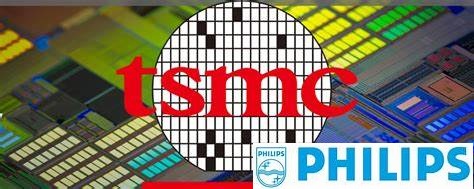
TSMC and Philips have deep historical ties. In fact, TSMC may not have existed without Philips. In the 1980s TSMC was established as a joint venture with Philips Electronics, the government of Taiwan, and other private investors. Several semiconductor companies were approached by Morris Chang for funding including semiconductor giants Intel and Texas Instruments but neither chose to participate. Both Intel and TI are now TSMC customers so it came full circle.
Only Philips was willing to sign a joint venture contract with Taiwan to put up $58 million in exchange for a 27.5 percent stake in TSMC. The Taiwanese government provided another 48 percent of the startup capital for TSMC and the rest of the capital was raised from private investors. The government asked several of the island’s wealthiest families who owned firms that specialized in plastics, textiles, and chemicals, to put up the money. TSMC was really a Taiwanese enterprise rather than a normal start-up semiconductor company.
It wasn’t just the money, Philips also played a crucial role in the early days of TSMC by transferring semiconductor manufacturing technology, IP and patents to the newly-formed company and working closely as an investor, partner, and customer. Philips really was the first semiconductor company to go fab-light due to the rising costs of building and operating fabs.
Even though they had a minority stake, Philips had quite a bit of influence and even installed the first TSMC CEO James E. Dykes, who had previously worked for Philips North America. I will write more about James in the next installment.
However, over time, Philips reduced its stake in TSMC, and the two companies evolved in different directions. Philips shifted its primary focus to health technology while TSMC concentrated on becoming the most successful pure-play foundry in history, absolutely. The other semiconductor powerhouse Philips has historical ties to is ASML (ASML was a spinout of Philips Labs) but that is another story in itself.
Here is some background on Philips from ChatGPT-4:
“Founded in 1891 by Gerard Philips and his father Frederik in Eindhoven, the Netherlands, Philips, or Koninklijke Philips N.V. (Royal Philips), is a leading multinational conglomerate known for its diversified technology solutions. Initially starting as a company manufacturing incandescent lamps and other electrical products, Philips expanded over the decades into various sectors.
Here’s a brief overview of Philips’ trajectory over the years:
Early Days (1891 – 1920s): The company initially focused on producing carbon-filament lamps. They soon became one of the largest producers in Europe.
Radio and Electronics (1920s – 1940s): Philips entered the radio market in the 1920s. By the 1930s, they were one of the largest radio manufacturers in the world. They also started producing X-ray and radio technology during this period.
Post-war Era (1940s – 1960s): After World War II, Philips was involved in the revival of the Stirling engine. They also diversified into products like television sets and shavers during this period.
Electronics Expansion (1970s – 1990s): Philips expanded further into electronics, producing items like cassette tapes, CD players, and other home electronics. The company co-developed the Compact Disc (CD) with Sony.
2000s and beyond: In the 21st century, Philips started streamlining its operations to focus on health technology and personal health solutions. They sold off or spun off many non-core divisions, such as their semiconductor division (NXP Semiconductors) and their lighting division (Signify). The company’s primary focus has been on healthcare, diagnostic imaging, patient monitoring, health informatics, and personal care.
Throughout its history, Philips has been known for innovation and has been responsible for a number of significant technological advancements. The company operates globally and continues to be a major player in the fields it is active in.“
The Dutch had an even deeper connection to Taiwan dating back hundreds of years. Here is a 10 minute history video that covers it nicely and is well worth watching:
Next up: TSMC’s first CEO James E. Dykes and the Taiwan Semiconductor Outlook (May 1988).
Also Read:
How Taiwan Saved the Semiconductor Industry
Morris Chang’s Journey to Taiwan and TSMC
Share this post via:





Flynn Was Right: How a 2003 Warning Foretold Today’s Architectural Pivot